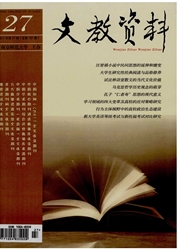

 中文摘要:
中文摘要:
随着改革开放政策实施以来城乡二元体制结构的松动和交通的便利,民族地区人员呈现出频繁的流动趋势。这种人群流动不但是文化接触和传播的载体,同时也带来了疾病的传播问题。文章选取艾滋病疫情较为严重的四川凉山彝族地区昭觉县竹核坝子为田野点,深入地进行了以艾滋病的传播与防控为主题的实证调查.试图从地方社会文化的角度对该民族地区现时段的艾滋病传播特征和疾病防控实践过程进行理解和分析,并提出,基于地方性知识的社区主体性的调动和国家一民间资源的整合运用是有效遏制艾滋病进一步向一般人群蔓延的途径。
 英文摘要:
英文摘要:
With the implementation of the policy of reform and opening up, the urban-rural dual structure was getting looser. The minority areas presented frequent flow of trends in the background. The population flow was not only a carrier of cultural contact and communication,but also the cause of the transmission of diseases. The author selected Zhaojue county, Liangshan Yi area as the point to do the fieldwork, investigated and analyzed the circumstance and situation of disease prevention and control of minority areas from the perspective of the local social culture.
 同期刊论文项目
同期刊论文项目
 同项目期刊论文
同项目期刊论文
 期刊信息
期刊信息
